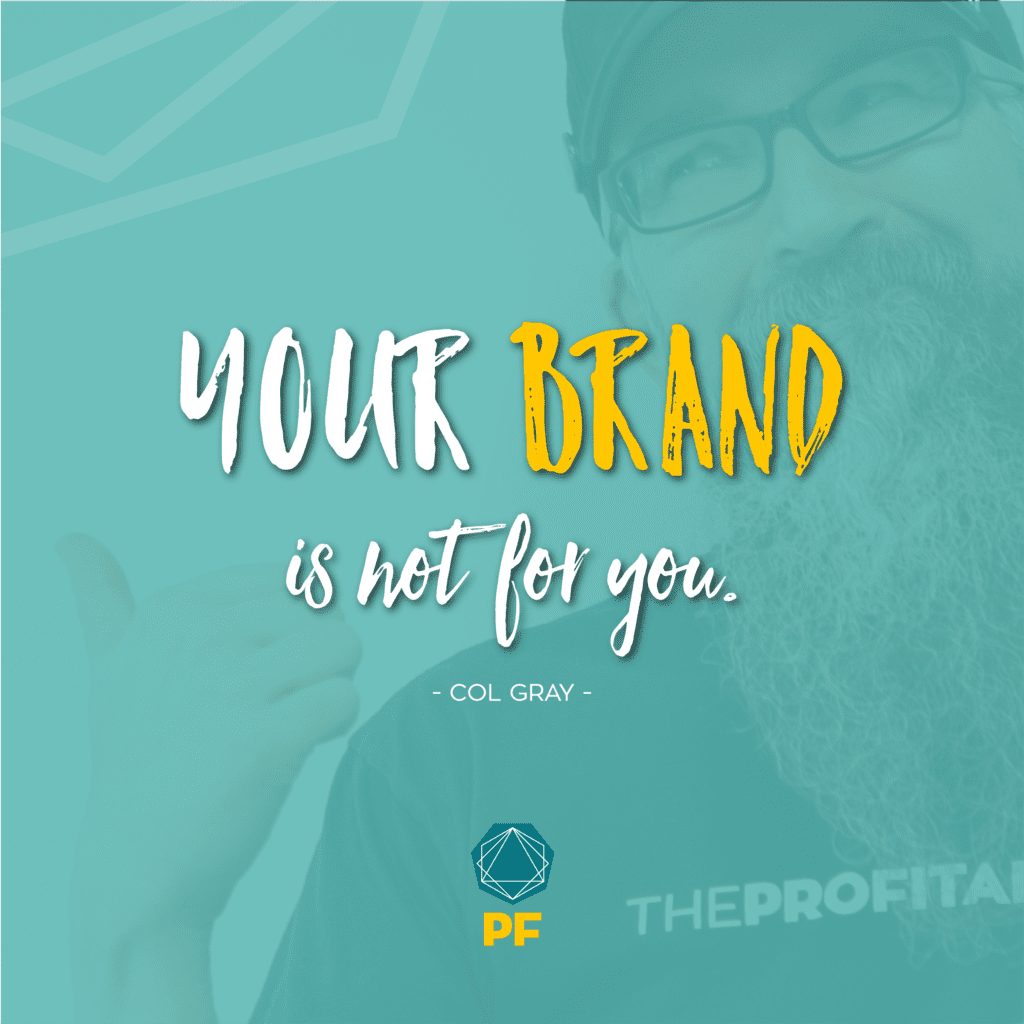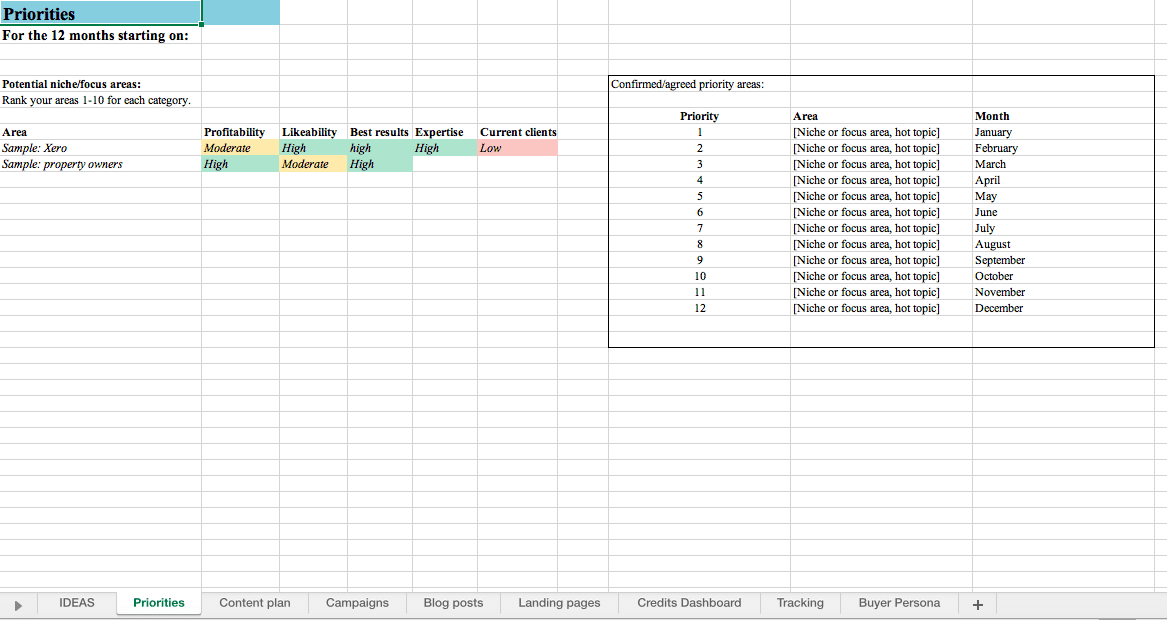 Setting a marketing budget when you haven’t had one (or much of one at all) is tough. You’re beginning to accept you need to be spending some monies on marketing, and you’re willing to do that.
Setting a marketing budget when you haven’t had one (or much of one at all) is tough. You’re beginning to accept you need to be spending some monies on marketing, and you’re willing to do that.
But…how much? And where do you put it? Where do you begin, and how long do you go, and what are other firms spending on their marketing?
When I look at the accounting firms who are now getting the results they were only dreaming of back at their marketing beginning, there’s a consistent pattern of how they approached marketing, of what they spent and when.
We’ve created a map to show this process, and I wanted to give you a suggestion of the marketing spend you may need to consider in the next 5-10 years of marketing your firm.
View the marketing map.
1. Coaching & learning– for you and your team
Free stuff: £0 (and some of your time)
Accelerator: £995 – £1995 – 12 week coaching group to motivate & give direction
PF Lab: £795/year (or £99/mo) – monthly community, support, learning, and accountability (group)
Spending money on marketing isn’t always the issue. Yes, most accountants aren’t spending nearly enough on marketing (or aren’t willing to), but before you start spending money, the core issue is always mindset.
Recognising how marketing works now – for accountants – means you don’t have to ask questions like “do I need google ads” or “how does SEO work” or “is social media a waste of time”? Instead, you’ll see the bigger picture and will understand where your marketing is going for the next year, two years, five years, ten years.
This also helps you set realistic expectations for your marketing results. It’s unrealistic to expect marketing to instantly deliver all these new leads to you. Even if it did that, which is rare, you’d still need to deal with all the leads and move them through the buyer journey. Not everyone buys at the same speed. Not everyone is ready to buy straight away. Prospects need to build trust, and that can take months or years.
On the positive side, if you’re worried that your marketing will work TOO well and you’ll have more leads than you know what to do with, this is rare. It’s more likely it will slowly take time and you’ll be ready when all the leads come in. Start it now, when you’re not quite ready for it, so you get the results in six months or twelve months’ time, when you’re well able to deal with it all.
This means you can stop using that excuse to avoid marketing (“I’ll start it later, because I’m too busy now”).
Oh – and if you want a quick win while you’re waiting for the long term marketing to trickle in, use GoProposal to do a fee review with all your existing clients. Some firms have doubled, quadrupled, and even multiplied by 8x (octupled?) the fees they were getting from the work they were already doing.
2. Branding: represent visually who your firm actually is
Read the Branding blog: £0 (and some of your time)
Foundations: £3,995 – Brand is the second session in this series of five custom sessions for your firm, which will confirm with you the most important marketing actions to do, so you achieve your firm’s goals and your own personal goals
Branding projects: £8k – £25k – logo & brand refresh, new design, marketing materials, rebrands
“I feel that branding is something we need to work on first because we’ve always struggled with that. We know what type of firm we want to be, and we’re not sure that’s being conveyed properly. We look around at other firms who are changing their name, their brand and logo, and their websites – and even if they don’t do high quality work, they’re still getting the new business faster.”
A firm I was speaking to recently shared this with me about his thoughts on branding, and I thought it was spot on. More and more lately, the first step for the firms we’re working with is branding.
It’s core to everything you are, every marketing action you’ll take in the next 5-10 years. Your brand is far more than simply your firm name and logo: it involves:
- Core values: What do you stand for?
- Culture: The invisibles of “this is how we do things here”
- Audience: Who you serve
- Niche: Do you have one? Do you want one?
- Emotions: How do people feel when they connect with you, work with you?
- Reputation: What people say about you when you’re not in the room
Even if you get expert advice and then decide to carry on with the brand you have now, it’s still critical to address your brand at the beginning. It will direct every conversation you have about marketing in the future.
Remember, your brand is not for you. It’s for your clients. The most dangerous decision you can make as an accountant, when it comes to your brand, is to pick something based on what you like. Colours, fonts, style that appeal to you personally.
You’re not targeting accountants like yourself. You’re targeting people who want to work with an amazing accountant (you) and you need the visual brand which will represent that – to them.

3. Website: take prospects through the buyer journey
Website webinar: £0 (and some of your time)
Foundations: £3,995 – Website is the third session in this series of one to one sessions, custom to your firm. You’ll go through your client & visitor journey, and identify what pages are most important, what messages and calls to action need to change so you get better leads (and they decide faster). Deliverable is a website structure showing all this.
Website projects: £4k – £25k – custom built website based on your audience & their journey
“We hired a web designer to build our site, but we felt like we were being asked to make decisions and lead the project. Things were out of joint, we hadn’t reviewed our brand first, and there’s no one managing this whole process for us.”
More often than not, accountants build a website like this.
1. Decide a new website is needed because it’s outdated
2. Get recommendations of who to work with
3. Get quotes from recommended people/agencies
4. Talk to companies & review quotes
5. Pick one that’s not too expensive but the company seems nice
6. Start the project with enthusiasm
7. Get asked by the website company to…
a. Suggest what pages you need
b. Write the content
c. Supply images (or approve stock ones)
d. Suggest any edits
8. Get tired of the whole project and wish it had never started
9. Approve the draft site just to get it done
10. Launch a site that’s marginally better than the one you had before
11. Return to step 1 and repeat
The problem with this process is there’s no strategy to it. No bigger picture of how the website fits into the entire marketing process – into your marketing map.
The key elements in our website process include:
- Brand: who are you, and who do you serve?
- Issues: What problems and questions does your target audience have?
- Content: How do you teach and problem solve to build buyer trust?
- Stories: How do they know you can help them?
- Buyer Journey: What will potential clients do, and in what order?
- Calls to action: What exactly will the visitor be directed to do on each page?
Your website’s job is to bring in the right kind of quality leads, yes. Its job is also to send away the wrong ones. To make it so that the people you don’t want to work with would never enquire (or would be weeded out quite quickly).
Getting a beautiful website built feels nice: but you don’t want to simply feel proud of a nice looking site. You want it to do its job, and that means addressing your buyer journey.
4. Marketing plan: the actions you’ll take, prioritised and organised
Foundations: £3,995 – The outcome of the foundations sessions is a detailed marketing action list so you know exactly what to do and in what order.
Marketing plans feel like something you spend a bunch of money on and then nothing really changes. You have a little more clarity on your target audience and the types of things you can do, but you still don’t know what exactly needs done, and in what order, and how much it’s going to cost.
Your deliverable from foundations is a marketing action plan which lists out hundreds of specific actions, prioritises them, and identifies the top 5 core areas you need to focus on over the next six months so you achieve those firm goals (and your ROI). These are all summarised in a custom Gsheet, prioritised and organised (nicely by colour). That way, you can pick the actions you’ll do yourself, the ones you need to outsource, the ones you’ll hire someone for, the ones you’ll do later.
The items within the list are very specific. If you say “write PDF guide on niche topic”, that’s a marketing idea. Marketing actions are very specific, things like:
- Identify issues within niche area
- Write draft content for guide
- Get content edited, tidied, structured
- Get guide designed
- Review designed guide & make final edits
- Write content & create structure for landing page on website for guide
- Design landing page
- Get landing page built on website
- Publish landing page
- Link to landing page from other areas of site
- Write content for invite emails to download guide
- Write content for follow up emails after guide is downloaded
- Design email/template
- Enter content into email template/design
- Test, review, and send emails
- Schedule automated email content for guide follow up
- Write content for social posts
- Design/select custom images of guide for social
- Draft social posts & schedule
That’s a list of 19 things in order to properly achieve what you’re hoping for with your one idea (the guide) – and there are many others you could do as well.
One of our clients got the draft of his marketing plan and told us later, “I saw the draft and thought it was looking really good – and then you sent the updated version and I thought, wait, how are there so many items all of a sudden? I didn’t realise that one marketing action could have so many actions behind it.”
Marketing action lists like this are a bit of a “dream list”. You don’t have to do every single one of these actions, but it helps immensely to think bigger picture, and to prioritise what will deliver the best results for you. What content will move someone forward in the buyer journey, faster? Prioritise that higher than some of the other marketing ideas – the ones which sound nice, but don’t have the same purpose.

5. Outsourced marketing: actually get marketing done consistently
Accountant journey webinar: £0 (and some of your time)
- Marketing credits – £95/mo x 10 minimum = £950/mo
- Co-pilot & tracking call – £495/mo
- Website management – £495/mo
- Social media daily posting – from £595/mo
Now you’re ready to get to the good stuff: actually seeing marketing get done, day after day, consistently to deliver results.
I trust by now you can see why it’s so important to go through steps 1-4 before you get here. We’ve learned the hard way that skipping any of those (the marketing training, the brand discussion, the website review, the planning phase) causes frustration and difficulty.
You’ll either have no idea what marketing to do – so it will be haphazard and random – or you’ll go all SQUIRREL! And simply do the next shiny thing someone else has done or mentioned. (“That other firm started posting on Twitter and they got a bunch of leads so we need to be on Twitter” – or – “Blog posts seem to help these other firms so we’ll just buy in some generic content and churn it out as blog posts, job done.”)
Once again, spending money isn’t the primary issue here. I’ve seen accounting firms willing to spend thousands per month, only to get frustrated and give up because they weren’t partnering with the agency – supplying ideas, sharing questions from clients and prospects, showing up to meetings, giving feedback.
Most firms we work with are in the small to medium size range. And they spend, at a minimum, £1500 – £3000 per month on their outsourced marketing (see the list above). If you’re considering hiring a full time marketing person, someone with the level of expertise you need will cost you in the £25k – £40k range – and you would only have one person. You’d still need to spend here and there on graphic design or social media training or videography or content editing.
It’s not about the money you spend matching the size of your firm: we have some clients who are a one-person business and others who have hundreds of employees – but we recommend you start planning towards a marketing spend between 5% and 15% of your sales. This may take time to build up to, but the firms who are getting incredible results from their marketing – the highest quality leads, delivered on a drip feed – are spending in this range.
They invest big in the foundational areas (a beautiful brand reflected in their visuals and offices and everything they do, a website that portrays their brand and buyer journey and invites leads), they hire internally as well as outsourcing; they’re active on social media with real conversations; they run events; all of those things you’d like to think about doing but aren’t sure where to begin.
The 5-15% range is a GOAL. It’s where you want to get to, and it will fluctuate depending clear you are on your target audience and their needs. I talked to a firm who is doing all of the above amazing marketing, and their marketing spend is now about 7% of sales. (Percentage wise they invested well over 20% of sales in the first few years, to get their foundations right.)
6. Social media: higher level awareness & lead generation
Social media blog: £0 (and some of your time)
- Social media daily posting – £595/mo
- LinkedIn posting & lead generation – from £695/mo
- Instagram or other social – custom – from £595/mo
When we investigated the results our clients are having with social media lead generation, the very best results happen when the accountancy firm has gone through the marketing map in order. Coaching, then brand/website/plan, then creating content on a regular basis. Once you have all those foundations in place, you can use social to step up the awareness of your firm, and to accelerate getting more leads of the kind you want.
Without those foundations, social will be an exercise in frustration, too. It matters that you go in order:
Training – Understand how marketing works, and how social fits into the bigger picture
Brand – Be clear about who you are, and who you serve. Have all the visuals to represent that well on social (cover images, custom graphics, video, etc)
Website – Create the content and support which will answer your prospects’ questions and lead them through the journey the way you want them to
Plan – Be clear about what content you’ll create, and when, and what platforms you’ll use to share it
Content – Actually create that content in varying forms (blogs, video, graphics, etc) and keep creating it
Social – Share it
Once you’re doing all that, you can present it to the right people at the right time so they can take action…and then that brings them right back round to looking at your brand and engaging with your website and downloading your content and watching your videos and signing up with you.
So there you have it. Full circle. Whole picture. The marketing map, and the associated costs we see firms spending on it.
Every firm’s journey will go at a different pace, and you may circle back to other areas a few times before you get to the ‘end’, but even once you complete it, that’s simply the beginning again.
Enjoy the journey!


